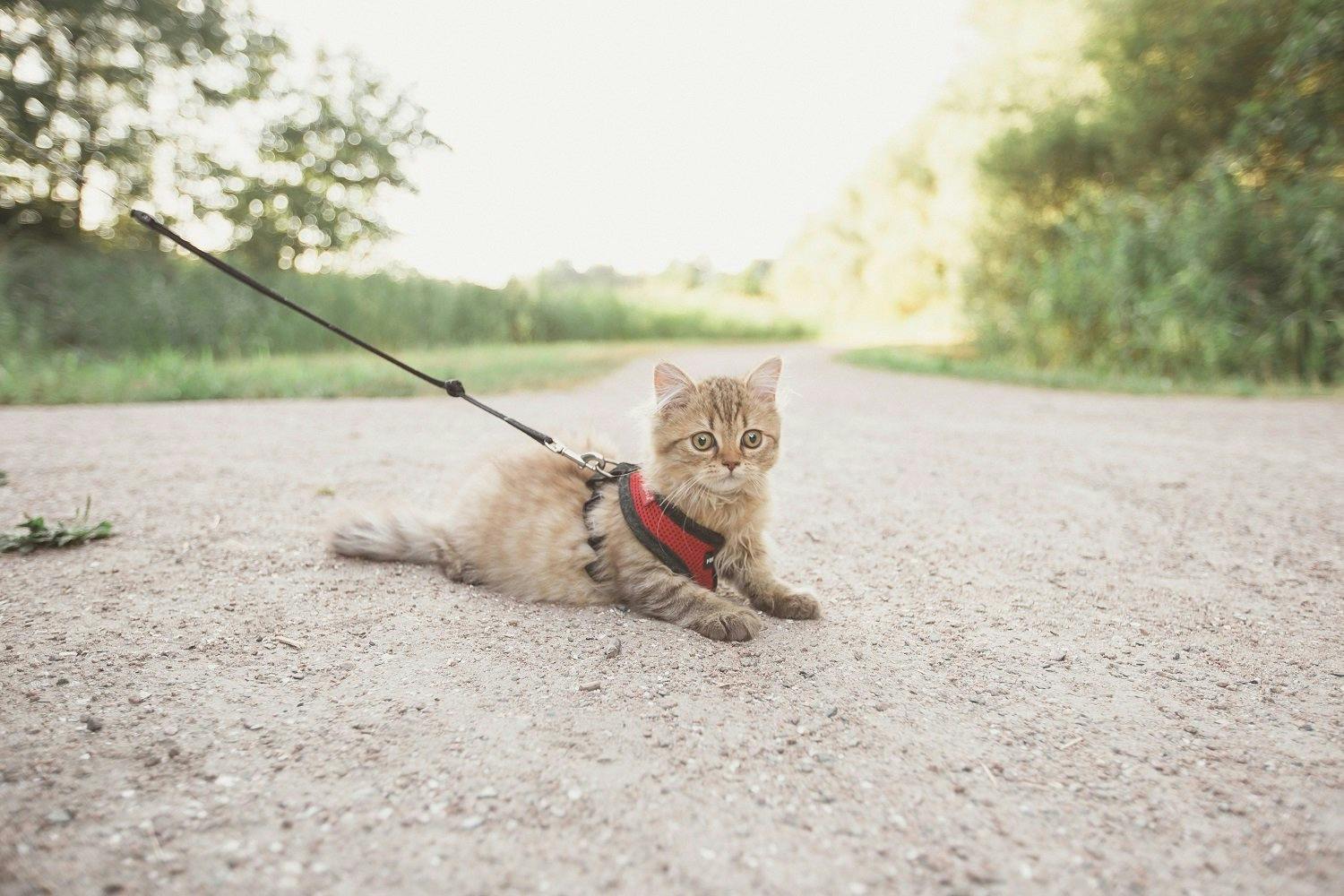Many of us like keeping our kitties indoors in an effort to protect them and keep them safe and healthy for many years to come. We mustn't forget, however, that cats love and crave the outdoors just like us! They need to be active, explore the surroundings and enjoy the fresh air just as much as we do. Because it can be unsafe to let them roam freely in the city, the solution could be to walk a cat instead!
Many people find it quite challenging to train their cats for walks on a leash, but with a little bit of patience and consistency, we promise you that it is totally doable! After all, why should dogs have all the fun? To help you get started on the journey, here are a few things to keep in mind when it comes to cat walking.
What are the benefits of cat walking?
All cats are delightfully unique, which is why it remains true that not all cats will want to be walked on a leash. Nonetheless, all cats deserve to be given the opportunity! Walking your cat can significantly enrich its life. It will give them an opportunity to be more active and to explore their surroundings. All cats love to smell things, roll around in the grass, listen and watch the birds and other animals and scratch the real trees.
Providing them with these activities will stimulate your cat to remain more active, engaged and bright. Furthermore, a walk can help overweight kitties shed a few pounds, highly-energetic cats channel some of the excess energy in a healthy way, and fearful kitties gain a bit more confidence.
Getting started: How do you train your cat to walk on a leash?
Cats are notorious for being independent and stubborn, which often makes it challenging to train them. But, if you find just the right way to work with your kitty, you can teach it wonders. A few important things to remember when teaching your cat anything are to be incredibly patient, consistent and gentle. The duration and intensity of your training sessions should always be adapted to your cat's mood and you should never forget to reward good behavior with some delicious snacks. To get your cat used to walking on a leash, try following these steps:
RELATED: "How to Train a Cat" Guide
Step 1: Choose the right harness
First and foremost, please remember that neck collars are typically not sufficient for walking a cat. Cats are very agile and can often wriggle out of collars. Instead, invest in a harness that is designed especially for kitties. A cat harness usually consists of an adjustable body wrap which fits snuggly around your cat's chest and an adjustable neck collar attached to it. The harness should fit well around your cat's body, but it shouldn't be so tight that it constricts air flow. The rule of thumb is that if you can fit two fingers between your cat's body and the harness, it should be just the right fit. When you attach the leash to the harness, the leash should be hooked somewhere between your cat's shoulders (not at the neck!). The clips holding the harness on your cat's body, as well as the leash attached to the harness, should be secure clips rather than “safety break-away” clips.
Step 2: Gently introduce your cat to the harness
Once you find the harness that fits your cat just purrfectly, the time has come to introduce this new object to your kitty. For most cats, it takes a bit of time to get used to wearing a harness. It is recommended that you allow your cat to get familiar with the new object first. Let your cat see the harness, sniff it and inspect it for as long as they need to. If they show any interest in this unusual new object, do reward them with some delicious snacks. This will create a positive association with the harness. After you've given your cat enough time to get familiarized with the harness (this can be anywhere between a few hours or a few days, depending on your kitty), try putting it on your cat.
For the first few times, you may want to set the harness up loosely and keep it on your cats for just a few minutes. Repeat this as often as your cat is willing, gradually adjusting the harness more tightly and leaving it on for longer periods of time. Some cats get used to the harness very quickly, while others may require more time and patience. Allow your cat as much time as they need and don't force them too much. If your cat struggles, remove the harness and try again later. Just make sure to be consistent and reward them at the end of every fitting session.

Step 3: Add a leash
Once your cat starts accepting the harness, let them walk around the house in it. Allow them to do their every day activities in the harness, gradually prolonging the amount of time spent in the harness. When they seem comfortable wearing the harness for longer periods of time, try attaching the leash. Some cats will be completely fine with this, but others may not appreciate the gesture very much. When you first attach the leash, let the leash down and let your cat drag it around. It will allow your cat to get used to the weight of it. It goes without saying that during these sessions, you must keep a close eye on your cat to make sure they don't get tangled up and hurt. After a while, grab the leash and follow your cat's lead. Don't try to direct them just yet, just follow your cat around and occasionally stop to give them a treat.
Step 4: Take the game outdoors
When your cat becomes comfortable on the leash indoors, it is finally time to take the game outdoors! Your first few trips should be short and close to your home. You can try carrying your cat outside and placing them on the ground. Give them time to adjust and slowly start exploring the area. Again, follow their lead and don't try to direct them by using force. If your cat was always an indoor cat, it will take them some time to get used to all the new smells, sounds and sights. If your cat used to be able to roam freely, then they will need some adjusting to the new ways of exploration. Don't forget to reward your kitty occasionally and make sure to take them back inside before they become scared or frustrated. Once you've done this a few times and you're confident you can actually walk with your kitty, try taking a short stroll around the corner. You should choose quiet and safe areas for the first strolls, where your cat is less likely to be startled by crowds, loud noises or other animals.

Now that your cat is trained to walk on a leash, you can finally enjoy some quality outdoor time together! Most of the time, you will want to allow your cat to take the lead and follow them where they want to go. Let them sniff around, listen and watch other animals, roll in the grass and scratch the trees. Make sure to direct your cat away from trouble, of course! In the beginning, it might be a good idea to bring a crate or a towel so that you can carry your cat back home in case they become distressed during the walk. Once your cat completely adjusts to all the new smells, sounds and sights (and dogs!), they will most likely start looking forward to the walks!
RELATED: Stimulate your cat to remain active through playing!
